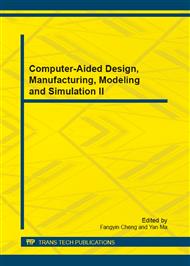p.189
p.194
p.199
p.204
p.208
p.213
p.219
p.225
p.230
Visual Saliency Detection Based on Deredundancy and Global Contrast
Abstract:
A new method for saliency detection is presented. Based on the sparse coding model, we propose a power spectral filter to eliminate the second-order residual correlation, which suppress the global repeated items effectively. In addition, aim to modeling the mechanism of the human retina prior response to high-contrast stimuli, the effect of color context is considered. Experimental result indicates that our method has high-quality detection performance with respect to the ability not only to highlight the salient objects in complex environment but also to pop up them uniformly.
Info:
Periodical:
Pages:
208-212
Citation:
Online since:
December 2012
Authors:
Keywords:
Price:
Сopyright:
© 2013 Trans Tech Publications Ltd. All Rights Reserved
Share:
Citation:


